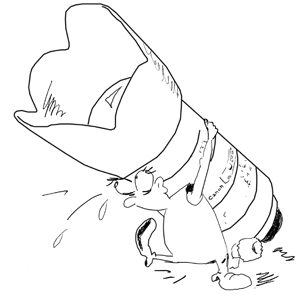 As with any other piece of equipment, choosing a lens is a
As with any other piece of equipment, choosing a lens is a
1. High quality, high convenience, high price. We're talking about
2. High convenience, low quality, low price. Cheap zooms. A
3. High quality, low price, low convenience. Normal prime lenses. A Canon 50mm f/1.8 or Nikkor 50mm f/1.8 (pick the one that fits your camera) both sell for under $100. But don't confuse them with cheap zooms. It makes perfect sense to put these lenses on any camera body, they deliver the same optical quality as thousand dollar zooms. The catch? Instead of zooming with your lens, you'll have to zoom with your legs. Yes, as in "lift your butt and actually walk closer to your subject" (or step back if it doesn't fit in frame). Of course, it's not always possible and you will miss some shots. However, you will find some as well. You will discover new view angles and learn to look for better locations instead of photographing from where your tour bus stops. And you may loose some weight too ;)
A normal prime is an excellent choice. Chances are that you will keep it even after you filled your camera bag with all kinds of lenses. I do.
If you have a bit more money to burn, look at the faster primes (e.g. Canon 50mm f/1.4). One extra stop might be a blessing in some situations, though I'm not completely convinced it's worth the price difference — especially as cameras perform better and better at high ISOs.
4. Moderate quality and price, high convenience. If your budget allows it, you may consider an
Optically these lenses are not as good as primes, but they give you more flexibility.
At some point you will probably want to have both, a nice prime and an
One last thing. Whatever lens you choose, remember:
If you haven't read the famous article about why your camera does not matter by Ken Rockwell, you should. Take it with a grain of salt, as everything that Ken writes (and I mean a REALLY BIG grain of salt) — but go read it.
© 2005, Dmitry Azovtsev
See also: